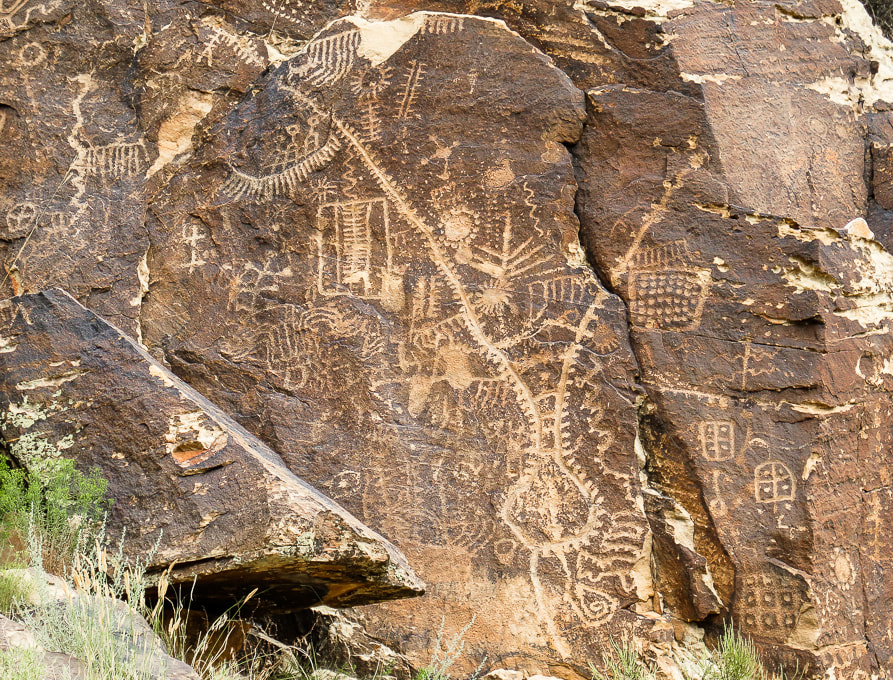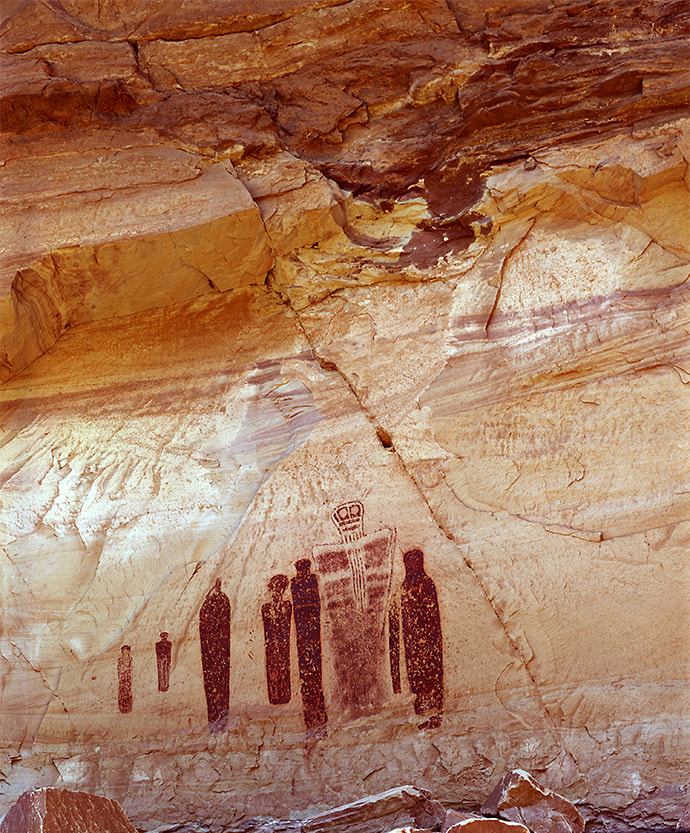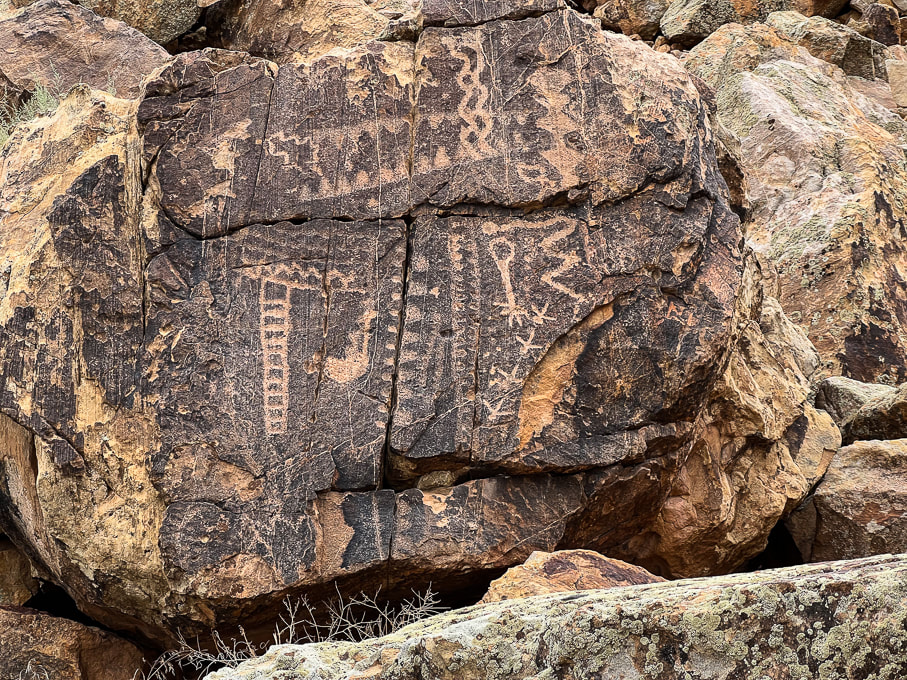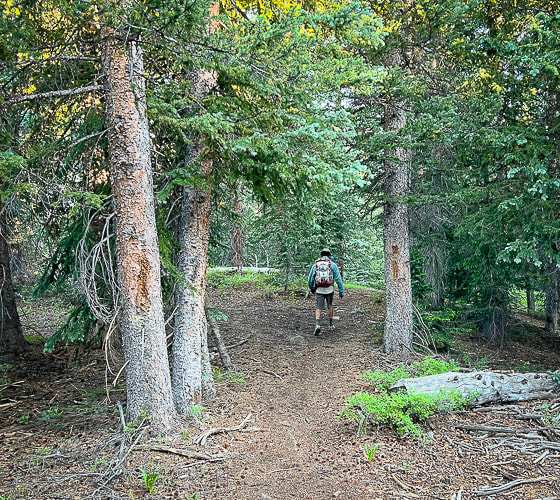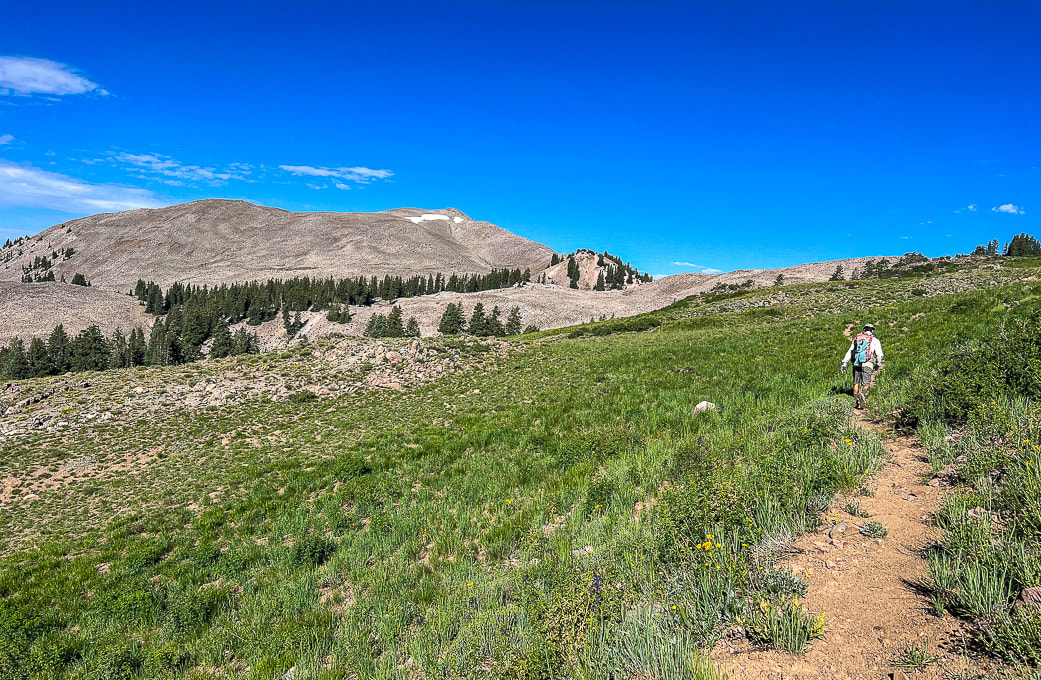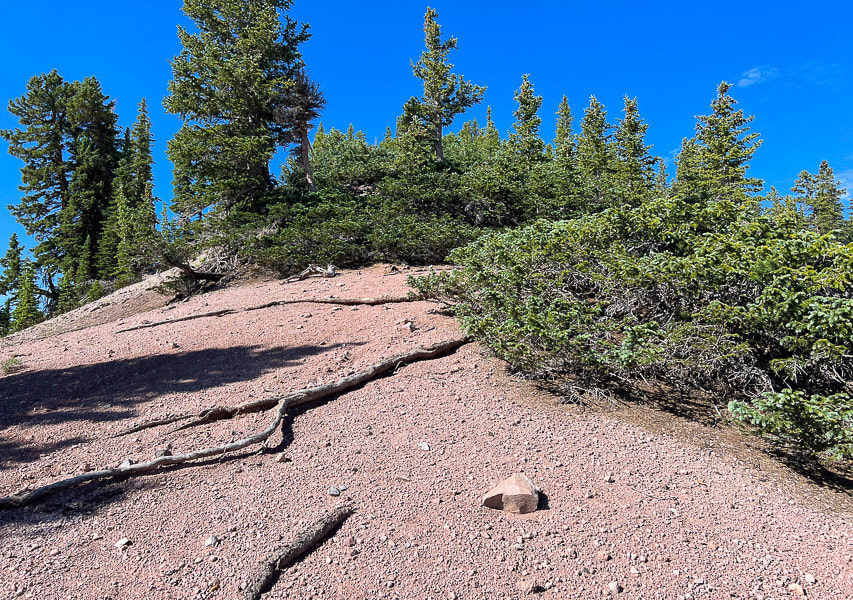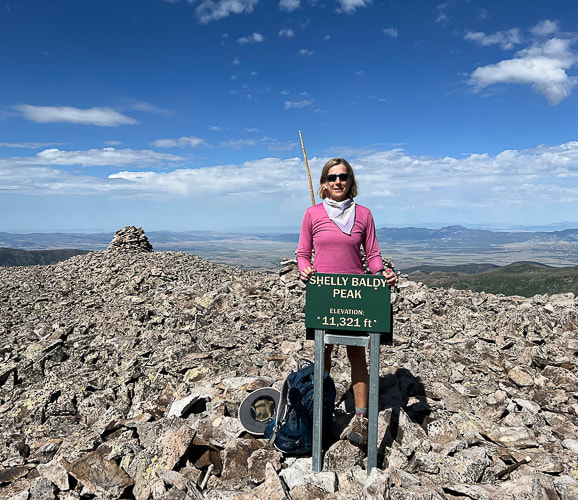|
This prominent gap in the Red Hills has one of the most abundant collections of American West petroglyphs, including the most unusual of all - the Zipper Glyph.
Iconic Parowan - the "Zipper Glyph"
Interpretations of this petroglyph include a solar calendar because it has 180 notches coinciding with the 180 days it takes for the sun to move between summer and winter solstices. The Paiute Indian Tribe of Utah interprets this as the story of a great Leader during a migration where many people experienced famine, drought, water crossings, cold and ice.
Trip Stats
Overview: At the western edge of the Parowan Gap, in the "Narrows", over 1,500 petroglyphs made by different indigenous cultures are carved in the Navajo sandstone. Location: Parowan, Utah, just north of Cedar City, in the Red Hills west of Little Salt Lake. Petroglyphs are in the notch at the west end of Parowan Gap. Managed by Bureau of Land Management. Petroglyph Coordinates: 37.909722 112.985556 Native Americans: Fremont culture, Paiute, Hopi. Recognition: Listed on National Register of Historic Places. Geology: the petroglyphs are pecked into Jurassic Navajo sandstone, deposited 190 million years ago.
Related Posts:
Petroglyph "Heaven"
To rock art aficionados, Parowan Gap must be petroglyph heaven, not only because of its famous "Zipper Glyph", but also the amazing quality and number of petroglyphs there - rock after rock, panel after panel (90 of them!). Some believe that this site has the most concentrated petroglyph assemblage of any in the American west. Some of the rock carvings may be as old as 5,000 years, the majority of them made by the people of the Fremont culture. To today's Paiute and Hopi tribes, this is a spiritual site. The Parowan Gap is a stream-cut valley and narrows through the Red Hills, just west of Little Salt Lake, north of Cedar City, and 10 miles northwest of Parowan, Utah. The petroglyphs are located in a dramatic V-shaped notch at the western edge of this gap, a great place for indigenous peoples to carve their petroglyphs during their migrations. I was looking forward to seeing the Zipper Glyph in person. With two "arms" and 180 notches, people who believe in the astroarchaeological (AKA archaeoastronomy) interpretation see this mysterious petroglyph as a solar calendar. If you look closely at the Zipper Glyph, it resembles the notch in the Parowan Gap. It is believed that this glyph is a map with relating equinoxes and solstices. However, the modern Paiute Tribe of Utah had a different interpretation: a migration of the old world to the new. The Paiutes say that the Zipper Glyph represents a long trail of hardship in which their great Leader was killed. The two "arms" in this case are the Leader's body shown upside down with his head at the bottom.
An interpretive sign illustrating the belief that the "Zipper Glyph" was used to chart celestial movements.
Interpretive sign that describes the Utah Paiute Tribe's interpretation of the Zipper Glyph.
Parowan is nicknamed "the Mother Town of the Southwest." It's a city that has gone through a lot of changes since it first began mining iron in the 1800's. Now its main industries are tourism and recreation, including Brian Head, a year-round resort where we like to go skiing. It was first called "City of Little Salt Lake," because of its proximity to Little Salt Lake, a now salty playa to its west. It was renamed "Parowan," a native American word meaning "evil water." This lake is a key geographic feature relating to the formation of the Parowan Gap.
Fred and I had just hiked the astonishing Cosmic Ashtray in Grand Staircase-Escalante the day before, so we were on our way home. I had to talk him into seeing Parowan Gap; he doesn't normally want to go too far out of the way to see petroglyphs but with these he was pretty darn impressed. On the same Grand Staircase trip, we also hiked to a huge petroglyph panel along the Escalante River in Grand Staircase-Escalante National Monument, near the opening to Neon Canyon. Bear paws march up out of sight on this tall rock face, a rattlesnake slithers, and Fremont-culture warriors stand as just a few petroglyph examples. If you don't mind slogging through four miles of sand and slick rock, wading, and navigating, you can find these remote glyphs. It's believed that the Fremont culture made most of the Parowan Gap rock carvings 700-1,500 years ago, although the area has been inhabited for thousands of years before that. Typically the designs are abstract and geometric, although there are some lizards, snakes, and mountain sheep pecked into the Jurassic Navajo sandstone. Many petroglyphs are located very high, out of reach on the hillside. Check it out - you won't be disappointed! The interpretive signs make this a nice site. A great place to go afterwards if you are hungry is Centro Woodfired Pizzeria in downtown Cedar City.
Keep on Exploring!
For the Geo-curious: Creation of a Unique Land Feature
So, what created this peculiar notch in the hills — so noteworthy that ancient peoples over hundreds of years decided to engrave hundreds of petroglyphs as they migrated through the area? Two clues — the gap's rock orientation and Little Salt Lake help geologists to make sense of its creation. The ancient stream that for millions of years carved this gap through the Red Hills on its westward journey to the Great Basin became blocked by the rising Red Hills fault block. Its flow then accumulated to form Little Salt Lake, just east of the Parowan Gap. Either the fault block rose too quickly for the stream to keep incising through the rocks, or the region became drier and the stream had less volume, or both. Clues that faulting occurred are seen in the rock layers. North-south trending faults through the Red Hills caused east-dipping and west-dipping beds; some were left in their original horizontal position. The rocks here — Claron Formation (dominant Bryce Canyon rock), Navajo Sandstone (Zion's main rock), Carmel Formation, Iron Springs and Grand Castle formations first underwent mountain-building during the Sevier Orogeny 45-100 million years ago, when the Pacific tectonic plate collided and slid under the North American plate. The stream through Parowan Gap then carved a passage through the Red Hills. More recently, beginning 20 million years ago, Basin and Range extension (stretching of Earth's crust) began, which caused the Red Hills fault block to rise, blocking off the Parowan Gap stream's passage. Water collected to form Little Salt Lake, now a playa (a dried-up lake).
Geologic Map of Parowan Gap Quadrangle (USGS).
Little Salt Lake (lower right) was formed when the westbound stream that created the Parowan Gap (larger yellow, curving line (lower left) became blocked by the rising Red Hills. Note the parallel dark lines (faults) running mostly north-south and the long line extending from middle bottom to top right (Red Hills Fault), raising that fault block and providing a barrier to stream flow westward .
The "narrows" at the west end of the Parowan Gap. Ancient waters carved this opening in the Red Hills.
Extensive abstract petroglyphs on both sides of Gap Road, which passes through the Parowan Gap.
Interpretation of the panel above by Paiute Indian Tribe of Utah, from interpretive signs at the site.
Another Parowan Gap interpretive sign.
References:
Maldonado, F., et al. Geologic Map of the Parowan Gap Quadrangle, Iron County, Utah. U.S. Geological Survey. Wilkerson, C. 2018. Geosights: Parowan Gap, Iron County. Orndorff, R.L., et al. Geology Underfoot in Southern Utah. 2020. Mountain Press Publishing Company. Parowan City Corportation website. Wadsworth, Rueben. 2019. Parowan Gap day; Interpretations and Mysteries of a Petroglyph Heaven. Cedar City News Archives.
2 Comments
Hike a gorgeous and high Utah mountain range that relatively few know about. On Shelly Baldy's summit looking at Mount Baldy (left) and Mount Belknap (right), the Tushar Mountain's second highest peak after Delano Peak. Trip Stats Location: Southern Utah - Fishlake National Forest out of Beaver. Quick Summary (from Skyline/ Big John Flat trailhead on Forest Road #123, head northwest, ascend northeast ridge).
Difficulty: Easy - moderate Class 1, then moderate Class 2 scramble on stable talus ridge. Coordinates: Trailhead = 38.35910 -112.39317. Summit = 38.36911 -112.42528 Trailhead location: The Skyline-Big John Flat Trailhead is located 21 miles east of Beaver, Utah. From Beaver travel east on UT-153 road for approximately 16.2 miles. Turn left onto the FR123 (Sunset Drive) for 0.3 miles. Keep left on FR123 and travel another 4.5 miles to the Trailhead. Forest Service Interactive Map Maps/Apps: Fishlake National Forest - Beaver and Fillmore Ranger Districts map. Date hiked: July 26, 2023 Geology: Shelly Baldy summit is Mount Baldy Rhyolite, an extrusive igneous fine-grained silica-rich rock. Links: Mountain Forecast (weather) Fishlake National Forest Related Posts:
Descending Shelly Baldy's talus ridge looking toward the east and Delano Peak. Topo Map and profile for Shelly Baldy Peak accessed from Big John Flat/Skyline Trail trailhead. (Thank-you Caltopo). The Tushars: Ouiet, High, and Beautiful We keep returning to the less-traveled Tushars because of the forest, wildflowers, the variety of peaks to hike and the spectacular ridge scenery. And it's so green! We previously hiked Delano Peak, and a loop including Delano and Mt. Holly where we shared the mountain with the mountain goats. Copper Belt Peak was our original plan this trip, accessed along a beautiful ridgeline in the central Tushars, but we were blocked by a gate on the access road. We found out from a guy doing trail maintenance after finishing Shelly Baldy that there was still a snow slide blocking the road. Last winter (2022-23) saw record-breaking snowfalls in southern Utah. It's believed that Tushar came from the Southern Paiute word "T-shar", meaning "white". Mt. Belknap and Mt. Baldy, two of its highest volcanic-rock summits gleam white from a distance. Shelly Baldy is a fun peak and a not-too-difficult way to get stunning views of Belknap, Baldy and Delano. The hike is a combination of high-country creeks and waterfalls, meadows and forest, tundra and talus, and many wildflowers this July. The route is straightforward: you hike the Blue Lake Trail to its closest point near Shelly Baldy's northeast ridge and jump off to head cross-country towards it, having to negotiate a large talus field before embarking on a straight-up route on its ridge. It's a short climb on stable talus - not exposed - to the summit cairn, sign and mailbox that acts as a summit register. That night we stayed in the Mahogany Cove Campground, camping out of the back of our truck. We had driven up Forest Road 123 toward the trailhead the day before, but found all of the camping areas filled with RV's. The 275-mile Paiute ATV Trail, a network of trails and dirt roads runs through the Tushars. It ties together historic mining and native American sites, Mormon heritage sites, state parks and National Forests. Copper Belt Peak is still on our list. If we can't access it from Beaver, we can hopefully get to it from Marysvale, to the east. Comfort Kills In my Crossfit "box" (term affectionately used by Crossfitters to describe their gym which contains barbells, racks, rowers, jump ropes, kettlebells, etc.), a photo shows two athletes wearing shirts with the words "Comfort Kills." Intrigued, I read up on this "attitude." Forceful words, but they are true. We must go beyond our limits, our comfort zone. Going beyond what we think we can withstand, taking on risks in order to grow. "Our goal should not be to constantly remain in a sheltered place. Rather, in all circumstances have the ability to find solace." --Savage Gentleman website. I will keep on reminding myself. Growth and change happens in the extremes - Never Stop Climbing Mountains! Skyline/Big John Flat Trailhead just on FR 123. Some cool stuff on the trail. Griffith Creek near trailhead. Poison Creek - cold water and a bit tricky to cross! On the Skyline Trail walking out of the forest into higher meadows. Still on Skyline: first view of Shelly Baldy Peak with the two small snow patches near its summit. Intersection of Skyline Trail with Blue Lake Trail. From here we headed north (right) onto Blue Lake Trail. Blue Lake Trail: finding a point closest to Shelly Baldy's (peak with snow on it) ridge on the right. Looking for the best cut-off point from Blue Lake Trail. Looks like we found it. There's that big mound of talus to get over before heading up Shelly Baldy's northeast ridge. I think you could continue ascending Blue Lake Trail a little further and get off the trail to walk through the forest on the right and avoid so much of the talus. Faint trail through edge of forest. Hill of talus before reaching ridge. Wow! Pink!! Finally on steep, slippery ridge. Fred upper center. Pretty straightforward!! Mid-way up ridge looking at Mount Baldy, Tushar's third highest peak at 12,122'. At Shelly Baldy summit. Piece of cake! Looking west toward Mineral Mountains north of Beaver, Utah. On summit: Mount Baldy (left) and Mount Belknap (right). You can see why "Tushar" may have come from "T-shar," the Southern Paiutes' word for "white." Never tire of this beautiful forest. Reference
Cunningham, C.G, et. al. 1983. Geologic map of the Tushar Mountains and adjoining areas, Marysvale volcanic field, Utah. |
Categories
All
About this blogExploration documentaries – "explorumentaries" list trip stats and highlights of each hike or bike ride, often with some interesting history or geology. Years ago, I wrote these for friends and family to let them know what my husband, Fred and I were up to on weekends, and also to showcase the incredible land of the west.
To Subscribe to Explorumentary adventure blog and receive new posts by email:Happy Summer!
About the Author
|
